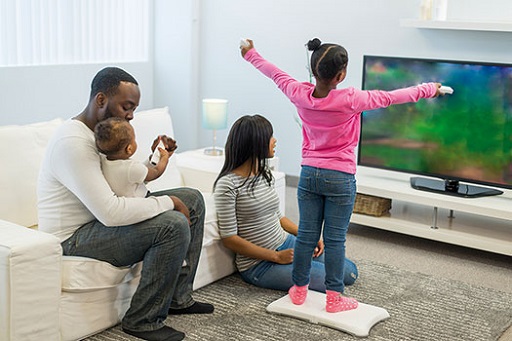1 Children’s physical activity levels
Children’s physical activity levels have been at the forefront of health discussions for several years now, with evidence showing childhood obesity as a major concern in the UK (National Obesity Forum, 2014), as well as linked with lower levels of physical activity (Public Health England, 2015). This is not just a UK problem: the World Health Organization (WHO, 2016) reported that 81 per cent of adolescents aged 11–17 years were insufficiently physically active in 2010. Health professionals and organisations are implementing many interventions aimed at increasing levels of physical activity to address childhood obesity and general health.
One factor often identified as contributing to childhood obesity is the abundance of technology now available to most children, which allegedly discourages them from participating in more traditional physical activities. However, the wide range of technology available means it can exert a variety of effects on children’s participation in physical activity. Before reading on, attempt Activity 1.
Activity 1 Is technology helping or hindering children’s physical activity levels? Your initial response
Consider the question ‘Is technology helping or hindering children’s physical activity levels?’ Reflect on your current thoughts on this matter. You may like to note these down as you will revisit this later.
Discussion
Your thoughts on this will be impacted by a number of factors. For example, some of you may use technology such as tablets when coaching, instructing or teaching children in order to record progress, enhance skills development or encourage greater activity levels. Some of you may be parents who find yourselves battling against technology, such as smartphones, laptops and games consoles, to encourage your children to be active. Yet some of you may have little actual experience of children and technology and so your judgement is based on what you have read in the media. Keep your notes safe as you will revisit this question at the end of the course, following our exploration of the evidence. You might find it interesting to see whether your views change.

